What is a Grassroots Advocacy Campaign & How Do I Create One?
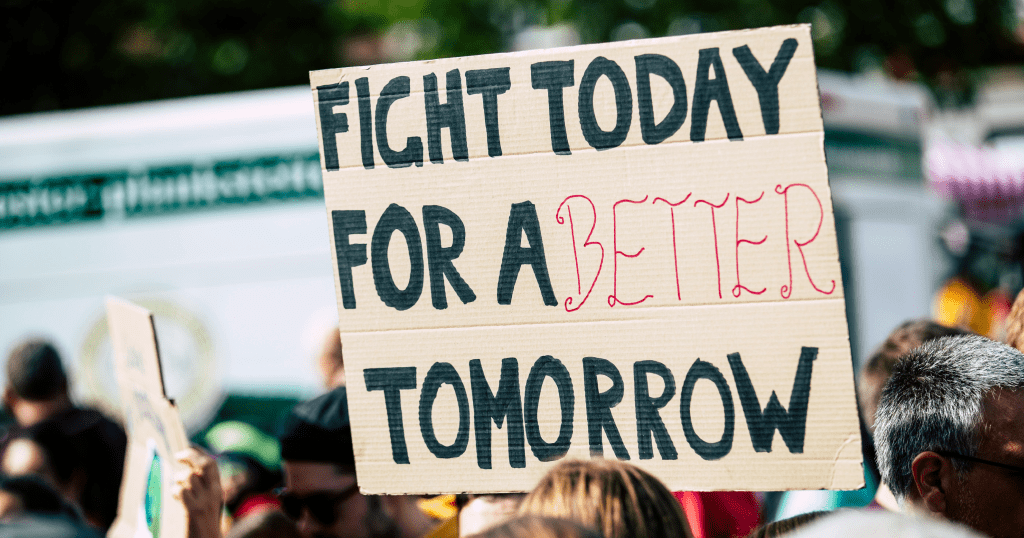
Is there an issue or a cause you really care about, or a policy change or legislation that you’re concerned about? One powerful way you or your organization can have a say and start to affect change is through grassroots advocacy.
Whether it’s your first time running a grassroots advocacy campaign, or you’re simply curious about what a grassroots campaign actually is, we’ve got you covered with definitions, examples, and a step-by-step process you can use to get started.
What is a Grassroots Campaign?
A grassroots campaign involves people collectively coming together to bring about a political change or influence support for or against a candidate that’s running. A grassroots campaign may be organized by a candidate’s party or campaign, or by citizens who wish to get involved. Since the main goal is to influence an election, activities typically include voter outreach, and timing is tied to the election cycle.
The term “grassroots” implies that the campaign should come from the ground up — driven by a broad group of individuals or constituents. This is opposed to a typical campaign which is well-funded and driven top-down by a small group of wealthy or influential people or organizations.
What is a Grassroots Advocacy Campaign?
Unlike a grassroots campaign, a grassroots advocacy campaign aims to promote or influence a specific issue, policy, cause, or legislative agenda — it is not tied to an election and may be a long-term, ongoing effort. The goal is often to raise awareness or to bring about a change in public opinion around an issue.
Common advocacy activities include media campaigns, organized protests, lobbying, and communicating with community members so that more people come onboard — often with the goals of applying further pressure to decision-makers and elected officials.
Who Might Run a Grassroots Advocacy Campaign?
Grassroots advocacy campaigns are commonly organized by activists, advocacy organizations, civil society organizations, and non-profit groups. But any organization, group, or individual could get involved in or run an advocacy campaign if they care about influencing an issue, policy, cause, or legislation.
Why Bother with Grassroots Advocacy?
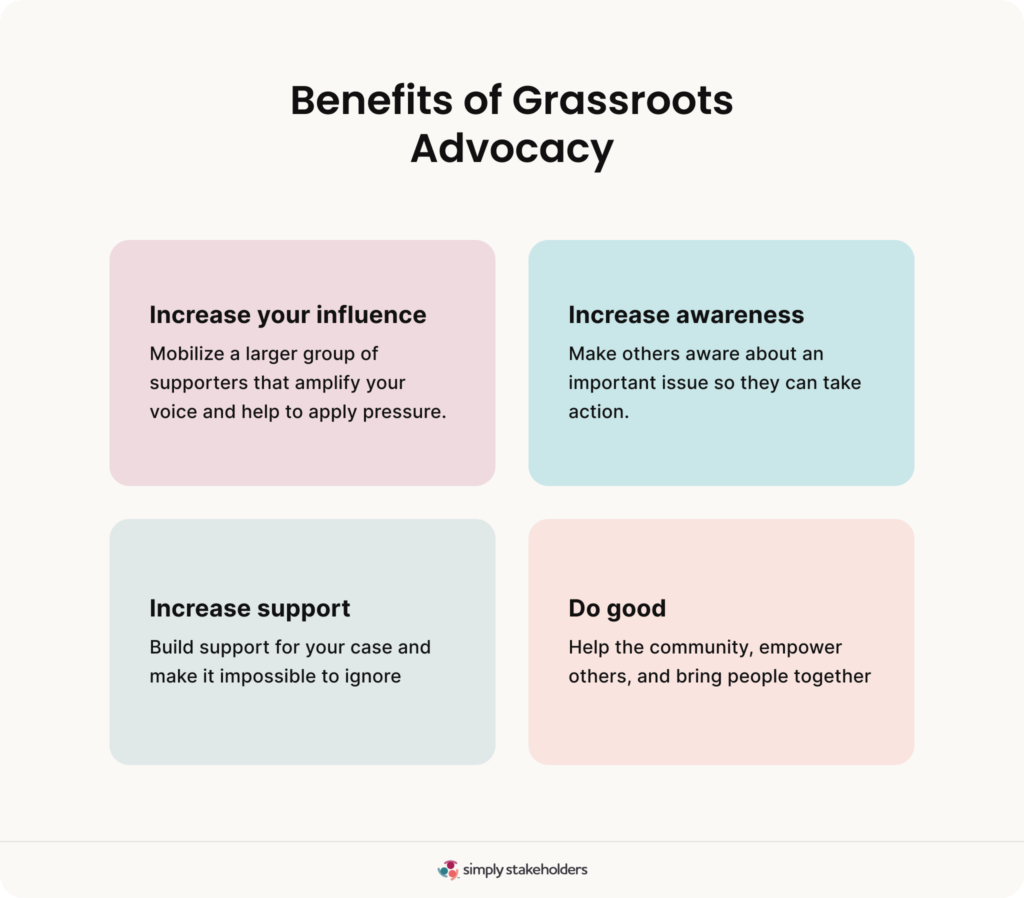
For certain organizations and groups, getting involved in grassroots advocacy makes a lot of sense. It might allow you to…
Increase Your Influence
As a stakeholder yourself, you may have little influence over certain policies or decisions that impact you or your organization. But grassroots advocacy can allow you to increase your sphere of influence by mobilizing a larger group of supporters. Your collective efforts will help to amplify your voice and perspective, while applying more pressure on those in charge to listen and take action.
Increase Awareness
Perhaps you care deeply about an issue or a cause that very few people know about. Or there’s new legislation that’s about to be passed, but the community doesn’t understand it or how it might impact them — but you do. Maybe there’s a policy that impacts your industry and needs to be updated in line with the current environment. In each of these cases, increasing awareness and targeting the right people with information could be an important step in creating change.
Increase Support
By increasing awareness of the issue or by communicating the merits of your position, you may be able to increase support for your cause. And of course, increased support means more people attending your events, talking about the issue online, contacting their representatives, and furthering your campaign. This increasingly makes it difficult for decision-makers or legislators to ignore the issue.
Do Good
Many grassroots advocacy campaigns come from a really good place — the desire to make life better for a community or a specific group of people. For example, your organization might discover a major safety issue stemming from a product that is commonly used in your industry. You might then promote public awareness to encourage people to protect themselves, while lobbying for increased regulation.
And even if it’s not your main reason for doing so, throwing your support behind a good cause can be really healthy for your brand’s reputation. Aside from that, civic engagement can be really healthy for communities, bring them together, build social capital, increase political participation, and empower them to drive change. Especially when lobbying or advocacy is managed according to the public interest and any negotiations are done openly — and any resulting changes occur in conjunction with appropriate stakeholder engagement.
5 Steps to Create Your Own Grassroots Advocacy Campaign
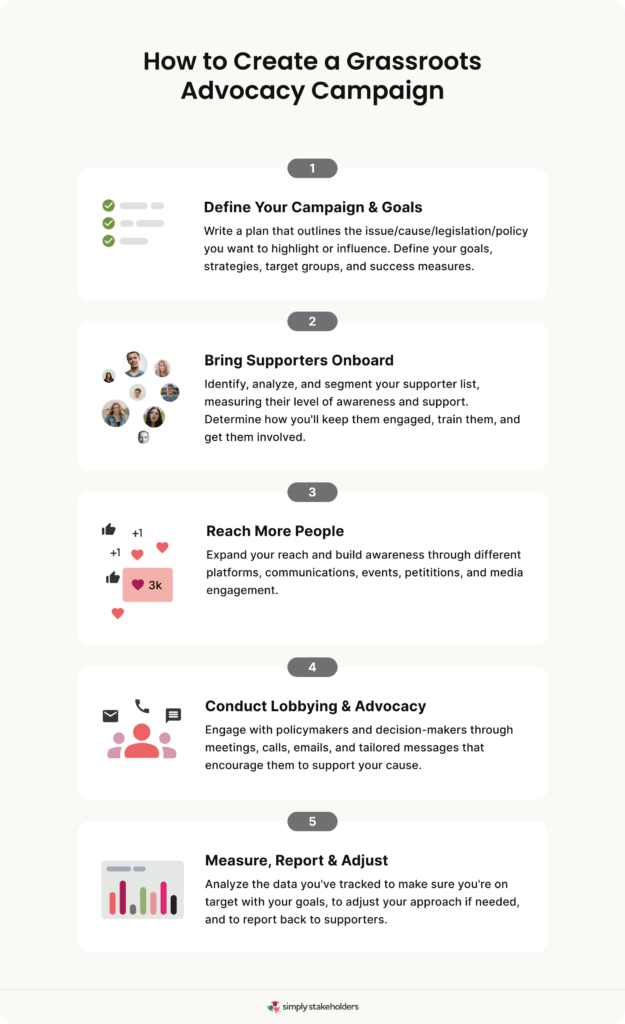
Ready to get started? We’ve broken down the typical process behind a grassroots advocacy campaign into 5 overarching steps.
Step 1: Define Your Campaign & Goals
Start by creating a simple written advocacy campaign plan. In your plan, you should answer questions like:
- What is the issue, cause, legislation, or policy that you want to bring awareness to or influence?
- Who are your target legislators, policymakers, or decision-makers?
- What specific goals do you want to achieve from your advocacy? (e.g. awareness from specific groups, reaching a specific number of people, building a list of supporters, visibility in media, a specific number of signatures, etc.)
- What individuals or groups do you plan to engage with, bring awareness to, or bring onboard as supporters?
- What kinds of strategies, activities, and messages would help you reach your target groups and achieve your goals?
- What’s your timeline for the campaign? Is it ongoing? Are there any external events or deadlines that might impact your timing?
- What resources do you already have in order to carry out your campaign?
- What do you need to measure in order to know if you’ve been successful?
Your advocacy campaign plan will likely look a lot like a stakeholder engagement plan — so you may want to check out our quick start guide for more details on creating your plan.
Step 2: Bring Supporters Onboard
Begin to build your base of supporters in a strategic way. We suggest taking a stakeholder engagement approach with this by:
- Identifying a list of current and potential future supporters
- Conducting relationship mapping to understand how these supporters are connected to you, your organization, and each other
- Conducting analysis to better understand their individual characteristics (such as their current level of awareness and level of support for the issue)
- Conducting mapping to help with segmenting and organizing your stakeholders
- Strategically prioritizing certain people or groups based on your mapping and analysis (for example, certain supporters may be ideal ambassadors who can be assigned tasks, build strategic relationships, and directly advocate for your cause)
As you recruit supporters, consider how you’ll continue to engage them with information, opportunities to get involved, and training to help them take an active, coordinated role in your advocacy campaign.
Tip: a stakeholder engagement platform like Simply Stakeholders can help you keep track of your supporter list, analyze them, map them, and record any relevant interactions with them (as well as your target legislators and decision-makers).
Step 3: Reach More People
In order to expand your reach to more members of the public and build awareness of your issue or cause, you’ll need to implement the strategies outlined in your plan. This might include:
- Campaign platform – Creating a dedicated website or page that is the “home” of your campaign will help increase your perceived legitimacy, while making it easier for people to find out information, access tools, and get involved
- Social media – Creating pages, events, groups, and posts on social media can put your issue in front of new audiences, while encouraging open discussion and debate
- Email updates – Creating an email list sign up will allow you to keep supporters and interested parties up-to-date on your activities and opportunities to get involved
- Events – Organizing or attending events such as town halls, rallies, and protests can provide opportunities to demonstrate your level of support, increase awareness, and draw in more supporters
- Petitions – Creating an online or physical petition can be a great way to show the scope of support for your cause (and is a really easy way for supporters to get involved)
- Media engagement – Letters to the editor, opinion pieces, press releases, and comments can increase your visibility in different media publications and help to shape the narrative
Step 4: Conduct Lobbying & Advocacy
In conjunction with your other activities, you’ll likely need to undertake some specific actions for lobbying and advocacy so that you can engage with policymakers and influencers. You and/or your supporters may:
- Schedule meetings – You could request to meet directly with the policymakers or decision-makers to present your data, stories, and your case
- Send emails – An experiment found that grassroots lobbying via email had a significant influence on legislative voting behavior
- Make calls – Similarly, you could call the offices of elected officials or decision-makers to raise your concerns
- Tailor your messages – Be aware that different legislators or decision-makers care about different things, and tailoring your message could increase your chances of connecting with them and getting them on your side
Step 5: Measure, Report & Adjust
Finally, make sure that you’re keeping track of any metrics and data relevant to your advocacy campaign and the goals you identified. For example, you may wish to track the number of potential supporters you’ve engaged with, their sentiments or level of support, what actions have been taken, and any responses or feedback. Regularly checking in with these metrics will allow you to adjust your campaign activities to get better results — and apply your learnings to future grassroots advocacy campaigns.
It’s also best practice to report back to your supporters to keep them in the loop with what you’ve been doing and demonstrate their impact.
3 Examples of Grassroots Advocacy Campaigns
Once you know what you’re looking for, you can discover grassroots advocacy campaigns popping up all over social media, in news coverage, and via online petition platforms. Below you’ll find three examples of grassroots advocacy campaigns to help you further understand what these campaigns look like.
Minimum Wage Lobbying

One very recent example of grassroots advocacy is the push to increase the minimum wage — particularly in the U.S. You’ll find a grassroots campaign here, with key facts on the issues and calls-to-action.
Meanwhile, a company called ServSafe that teaches a mandatory online food safety class to cooks, waiters, and bartenders is being used as a fundraising arm of the National Restaurant Association. Their course is helping to fund a nationwide lobbying campaign against increasing the minimum wage. It’s easy to see why this organization is funding the advocacy campaign — though it’s unlikely “do good” is high on their list of priorities!
The International Campaign to Ban Landmines
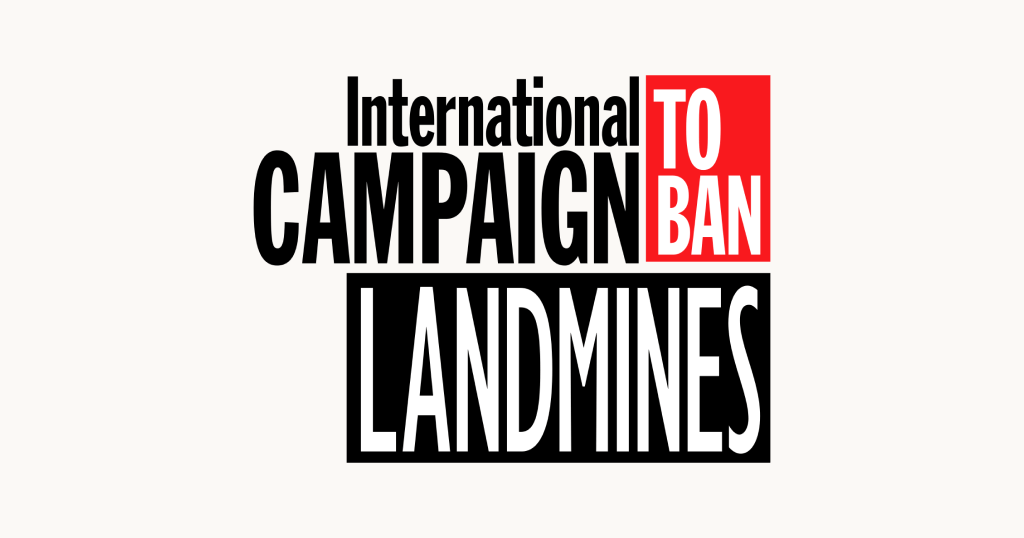
This is perhaps one of the most famous examples of grassroots advocacy. In the early 90’s, several NGOs and individuals banded together to discuss how they might coordinate initiatives and call for a ban on antipersonnel landmines. Six separate groups came together to form the International Campaign to Ban Landmines (ICBL) in 1992. They ran a number of national campaigns, with hundreds of organizations joining the efforts all over the world, leading to the convention to ban antipersonnel mines, signed in 1997. The ICBL (and its coordinator) received the Nobel Peace Prize in 1997 in recognition of their work.
Sunrise Movement for Climate Change Action
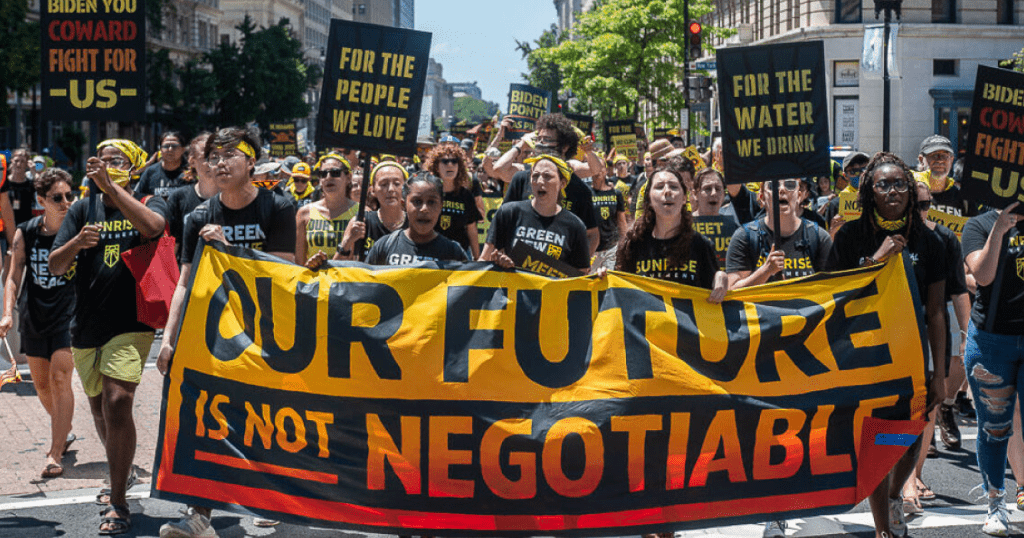
A more recent example of grassroots advocacy is Sunrise Movement, an American organization that advocates for political action on climate change. Launched in 2017, the organization initially worked to influence election outcomes (based on candidate support for renewable energy), but since then, have put their focus on shifting public perceptions in support of climate change policy. Current listed campaigns include Green New Deal for Communities, Electoral Organizing, and the call for a Climate Emergency.
Looking for a software solution to help manage your grassroots advocacy campaign (including contact management, tracking, analysis, reporting, and more)? Check out Simply Stakeholders or reach out to our team if you’d like us to take you through a personalized demo.






























